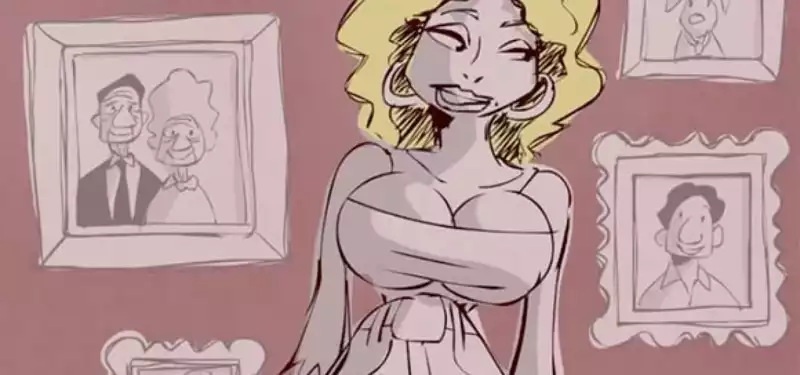Jul 15, 2015
How to Produce a One-Man Web Series: Pat Smith on the Production of Blank on Blank
[Patrick Smith is almost single-handedly transforming unpublished interviews with famous cultural figures into thought-provoking animations for his PBS digital series Blank on Blank."I'm currently working on 40 episodes, 160 minutes of animation," Smith recently told Cartoon Brew. "I never thought that was possible with my small setup, but working with a limited style and having creative control has sped things up and allowed me to finish each episode in a week. [For Smith, who made his directorial debut at MTV Animation with series like "Downtown" and "Daria" before launching his own studio, Blend Films, the game changer was accepting and appreciating the look of vector lines over hand-drawn on paper. Flash, he explains, helps a lot with quick drawing and easy exporting.
"Sliced lines and flat colors are great. Crude, oddly etched vector lines are fascinating," said the Long Island, NY-based animator, who has also created many films as an independent filmmaker. I don't mind the digital look. I'd rather have it look like a vector than like it's trying to be something it's not. As long as it doesn't move digitally, I'm fine with it."
Blank on Blank was born when a friend of Smith's put him in touch with David Gerlach, a TV news producer and journalist with access to a vast library of audio files. the two hit it off and began working together, but a series of early episodes lacked substantial funding, and Smith admits that they were probably produced too quickly. However, as the popularity of the series grew, so did the budget, and Smith was able to spend more time to ensure that his work stood out from the crowd.
"Interview-based animation is an overdone concept. Hand-drawn with symbolic graphic imagery, it's thought-provoking."
Smith's work is produced under the umbrella of Blend Films, but he is mostly a one-man operation. He prefers to go it alone if he wants to remain in a business that can go anywhere.
"Studio overhead can bankrupt an indie like myself," Smith explained.
"It's a shame because building and maintaining a studio can be a distraction from being an animator and getting the job done. The greatest strength of an independent animator is the ability to handle all aspects of production. Working alone is not ideal, but building a team is a big-budget luxury."Smith's deliberate solo production process begins when he receives a locked recording from Blank On Blank producer and audio editor Amy Drozdowska. His most common request is that there be plenty of room to work, which he feels will make his animations more audience friendly.
"My dream is to have someone's chair fall over during an interview. In one of my films I had an ex-con protagonist who kept smashing a big ring against his chair while he was talking." That's the detail that makes people human."
Smith began making animations by sketching in the margins of interview transcripts. He then made simple animations in Flash, using simple, flat shots that were easy to draw. He then refines the unfinished project while on Skype calls with the producer and sometimes PBS.
"Ultimately, it's up to me what I can get done in a week," Smith explains. 'Some episodes come together more easily than others. "
While earlier episodes of Blank on Blank featured basic symbolic representations of the subject, more recent episodes have tended to use more recognizable illustrations. This style of representation has Smith searching for distinctive features that can be used to ground the subject and animation in reality.
"Caricature is never my forte, I just do my best to make it easy to draw. I usually rely on one or two attributes to make up the rest." For Philip Seymour Hoffman, it's a big forehead and hair with lots of split ends. Bette Davis had big, heavy eyes. Johnny Cash's chin was layered, as if he had six chins on top of one another. Lou Reed had a wrinkled upper lip and wore a leather jacket."
"The most difficult to portray was Michael Jackson. Because the interview took place when he was younger, he looked so normal and young that we couldn't use typical alien Jackson features," Smith added.
"But in general, it's good to keep the actual subject matter to a minimum.
To see more episodes of the series, visit BlankonBlank.org.
.



Post your comment